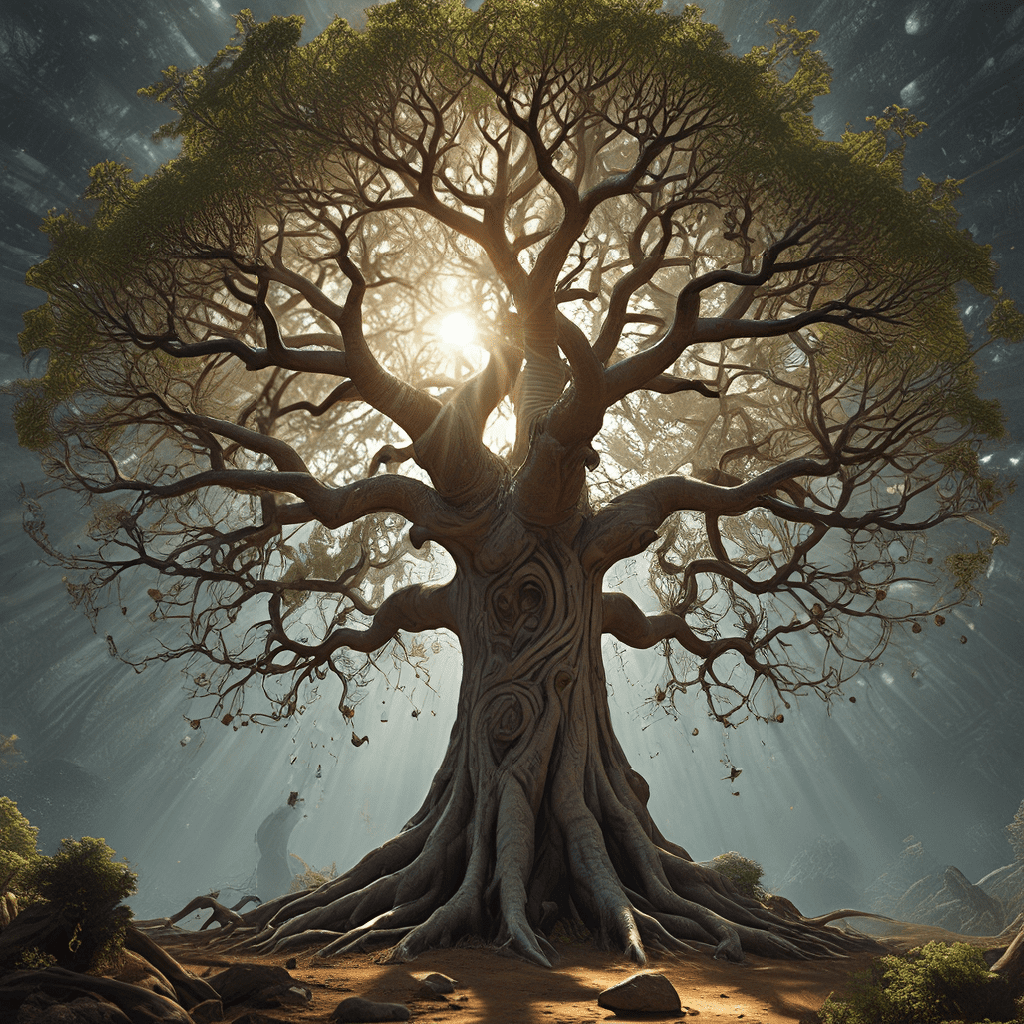The Cosmic Tree: Exploring the Branches of Life and Death in the Egyptian Creation Myth
In the captivating world of ancient Egyptian mythology, creation stories weave intricate tapestries of divine beings and cosmic forces. Among these tales, the image of the cosmic tree emerges as a recurring motif, symbolizing the interconnectedness of life, death, and the very fabric of existence. This article embarks on a journey through the branches of this powerful symbol, uncovering its profound significance in the Egyptian creation myth.
1. Introduction:
Egyptian creation myths played a central role in shaping the worldview and beliefs of this ancient civilization. They offered explanations for the origins of the universe, the earth, and humanity, providing a framework for understanding their place in the grand cosmic order. The concept of the cosmic tree, often depicted as a sycamore or a persea tree, permeates these myths, serving as a visual representation of the universe’s structure and the cyclical nature of life and death.
2. The Creation of the World:
According to Egyptian mythology, the world began with Atum, the primordial god, who emerged from the primordial waters of Nun. As the sole being in existence, Atum uttered the words of creation, bringing forth the first elements of the universe. From his own body, he gave birth to Shu (air) and Tefnut (moisture), representing the first breath of life. This act of self-creation is often associated with the emergence of the primordial mound, known as the benben, a sacred stone that symbolized the beginning of the world.
The cosmic tree is intimately connected to the benben, often depicted growing from its peak. The tree’s roots delve into the underworld, while its branches reach towards the heavens, symbolizing the connection between the earthly realm, the celestial sphere, and the realm of the dead. This image reinforces the notion of a unified cosmos, where all aspects of existence are intertwined and governed by divine forces.
3. The Cosmic Tree’s Branches: Life and Growth:
The cosmic tree is often equated with the Tree of Life, a powerful symbol found in many ancient cultures. Its branches represent the vibrant life force that sustains all beings. In Egyptian mythology, the tree’s growth is directly linked to the concept of “ma’at,” a fundamental principle of cosmic order and balance. This concept emphasizes the interconnectedness of all things and the importance of maintaining harmony within the universe.
The cosmic tree’s balanced growth, with its branches reaching towards the sky and its roots anchoring it to the earth, embodies the principles of ma’at. The tree’s stability represents the enduring nature of cosmic order, while its growth signifies the continuous cycle of life and renewal.
4. The Tree as a Source of Sustenance:
The cosmic tree is not just a symbol of life; it is also a source of sustenance, providing nourishment and support for both the divine and human realms. Its branches offer food, water, and the very essence of life itself. In Egyptian mythology, the tree is closely linked to the Nile River, its annual flooding representing the tree’s regenerative power and its ability to bring forth abundance. The Nile River, a vital source of life for ancient Egyptians, was seen as a manifestation of the cosmic tree’s life-giving force.
The tree’s fruit, leaves, and sap represent the bounty of the earth, providing nourishment for both the gods and mortals. This connection highlights the interconnectedness of all living beings and their dependence on the natural world for survival. The cosmic tree acts as a bridge between the divine and human realms, symbolizing the flow of life-giving energy from the heavens to the earth.
5. The Underworld and the Tree’s Roots:
In ancient Egyptian beliefs, the underworld, known as the “duat,” was not a place of eternal punishment, but a realm of transformation and rebirth. It was a vast and mysterious realm where the souls of the deceased embarked on a journey to attain eternal life. The cosmic tree played a central role in this journey, with its roots extending deep into the underworld, connecting the living with the dead.
The tree’s roots, which symbolize the connections between the earth and the underworld, also represent the passage between life and death. They provide a pathway for the souls of the deceased to navigate the challenges of the duat and ultimately reach the afterlife. This connection underscores the belief that death is not an end, but a transition to a new realm of existence, where the soul continues its journey.
6. The Tree and the Cycle of Death and Rebirth:
The cosmic tree’s branches reaching towards the heavens represent the journey of the soul after death. It symbolizes the ascent to the celestial realm, where the soul is judged and either granted eternal life or condemned to a lesser existence. The tree’s branches serve as a pathway for the soul to navigate the afterlife, leading it through various challenges and trials.
The cosmic tree, with its roots in the underworld and its branches reaching towards the heavens, embodies the cyclical nature of life and death. It symbolizes the continuous process of transformation, renewal, and rebirth that governs the universe. The tree’s enduring presence serves as a reminder that life is a journey through different realms of existence, with death being merely a transition to a new phase.




